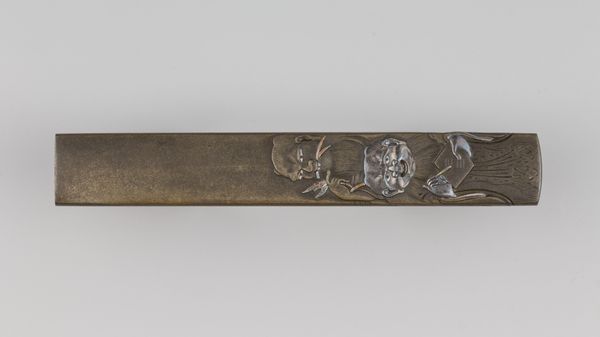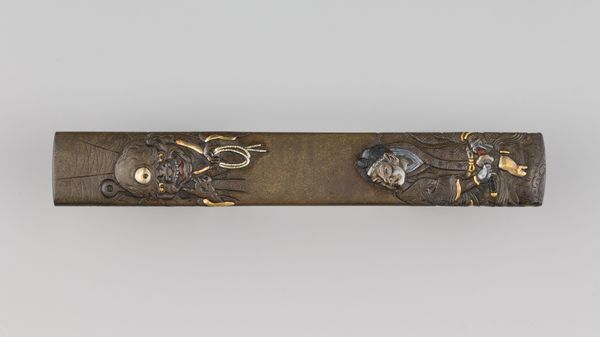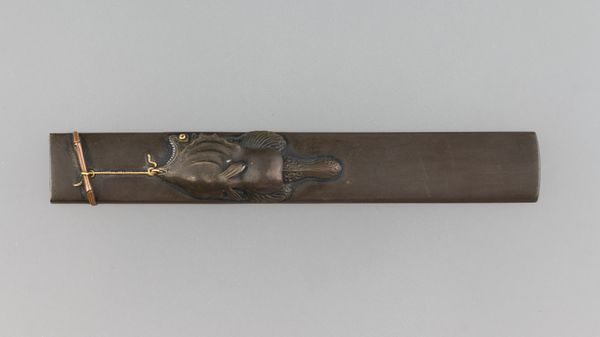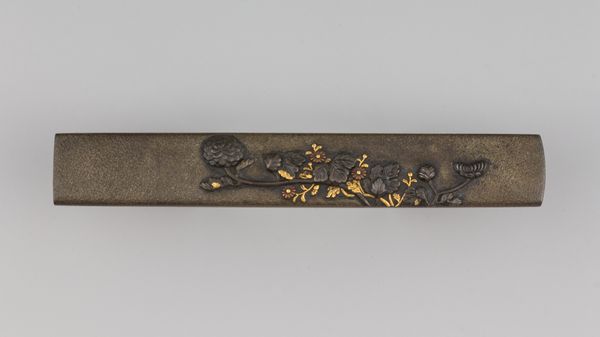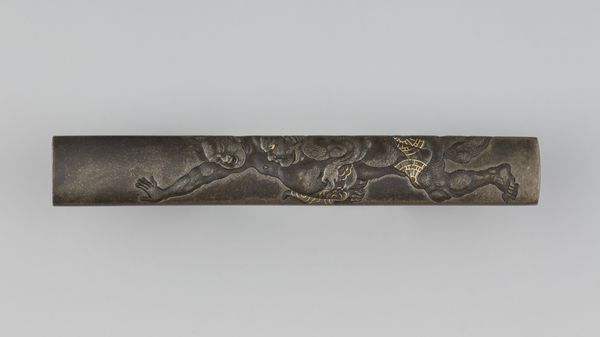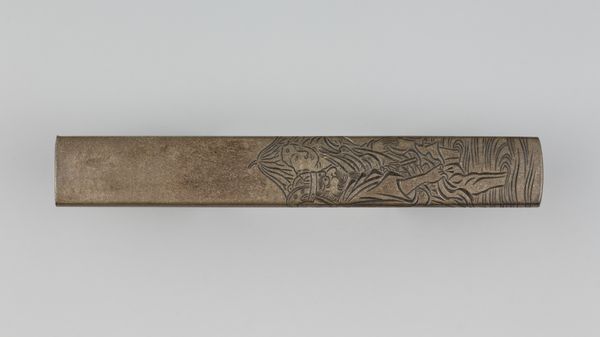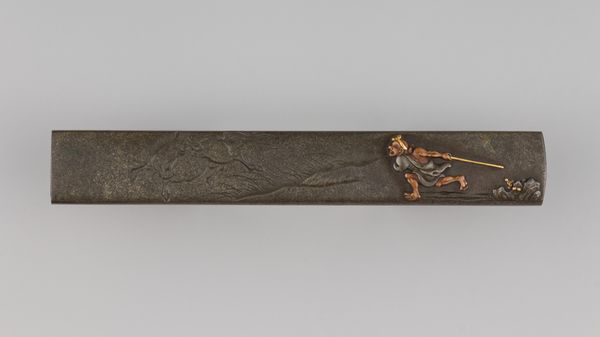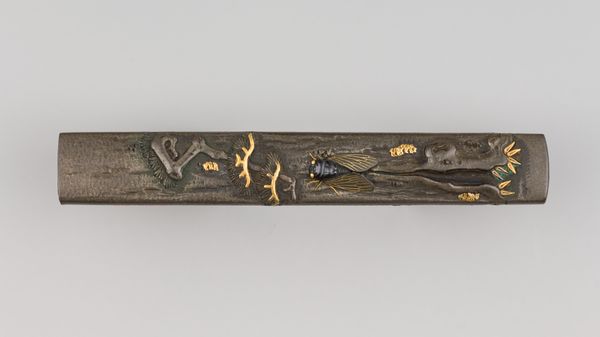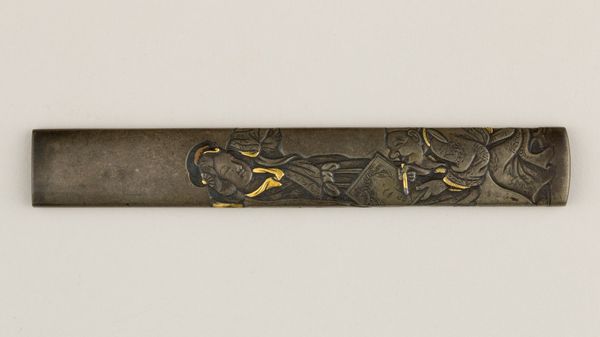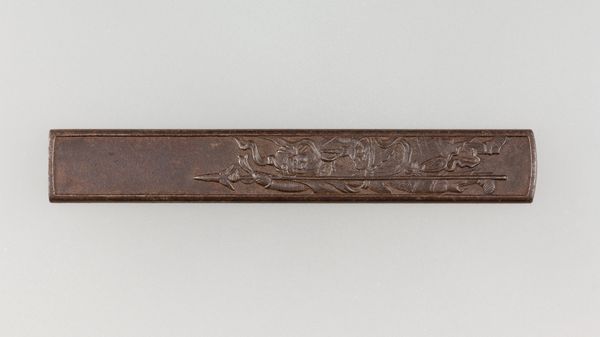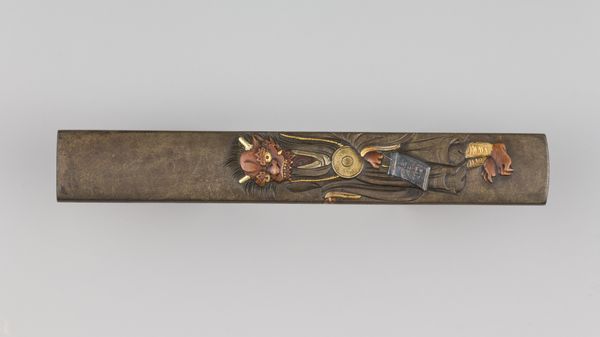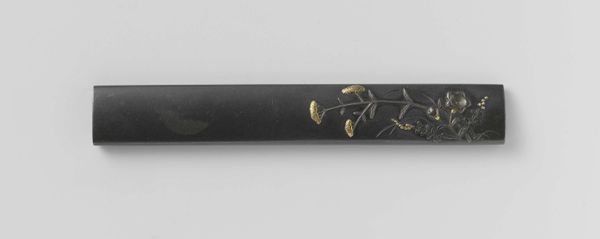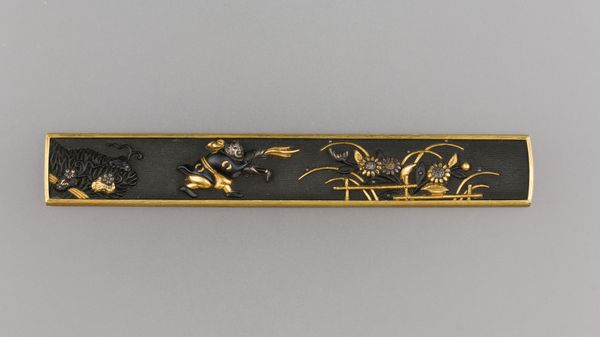
carving, print, metal, bronze, sculpture
#
medieval
#
carving
#
narrative-art
# print
#
metal
#
sculpture
#
asian-art
#
ukiyo-e
#
bronze
#
form
#
sculpture
#
line
#
sword
Dimensions: L. 3 13/16 in. (9.7 cm); W. 9/16 in. (1.4 cm); thickness 1/4 in. (0.6 cm); Wt. 1.1 oz. (31.2 g)
Copyright: Public Domain
Curator: This is a Kozuka, or knife handle, crafted by Hamano Yasuyuki in 18th-century Japan. It’s currently held at the Metropolitan Museum of Art. Editor: My first impression is that this is smaller than I expected, and incredibly detailed. It feels both delicate and somehow strong, durable, like it was meant for more than just show. Curator: It's remarkable, isn't it? Kozuka like this were functional components of a samurai's sword, though their decoration elevated them to miniature works of art. We see a dragon at one end and a shishi at the other; all rendered in metal, primarily bronze and other alloys. I’m most interested in how the bronze itself was sourced and processed in Edo-period Japan; and what that implies about trade routes at that time. Editor: Well, to me, those figures seem to evoke protective qualities, both dragon and shishi appearing throughout Japanese art and architecture as guardians against evil. What statement do you think this sends about the cultural values of its user and creator? Curator: The choice of subject would have certainly carried cultural meaning tied to status and aesthetics. These miniature sculptures reveal not only refined craftsmanship but also consumption and display among elite warriors in feudal Japan. Editor: Exactly! The shishi itself—a lion-dog hybrid—is fascinating; in this instance appearing more leonine to me, a marker of nobility, and associated with temples as protectors of sacred spaces. Its incorporation here shows complex threads weaving across social spheres. Curator: I'm thinking, too, about the production of such a detailed piece. The amount of time and skill dedicated is also remarkable—demonstrating specific training. This was specialized artisanal work. I’d like to explore more of Yasuyuki's body of work to explore whether we can locate this piece in relation to stylistic or material patterns. Editor: I completely agree; what draws me in most, however, is contemplating what the Kozuka as a tactile object meant for those that crafted and handled it: connecting to ritualistic acts of service and honor. Its worn sheen alludes to histories far more grand than its small size belies. Curator: An apt point about those grand histories. It encourages me to keep asking material questions—unearthing more about social context via its production—for it reveals so much beyond just one man’s creative flair. Editor: Precisely; and to consider it also invites consideration of potent, symbolic legacies resonating throughout time!
Comments
No comments
Be the first to comment and join the conversation on the ultimate creative platform.
